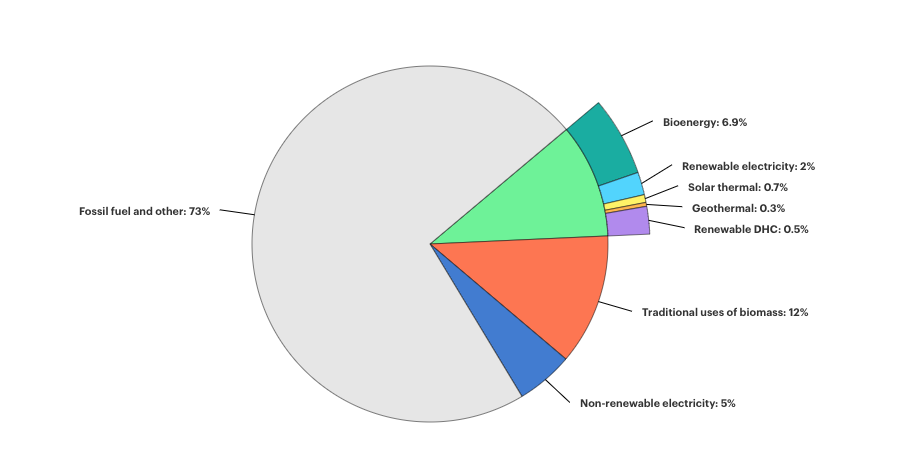IEA Renewables Forecast to 2025 – an utter disregard of heat and the potential of geothermal
The IEA highlights the important role of renewables in its 2025 Forecast released this month and shows the importance of heat in the context of energy demand and supply. The organisation though falls short in highlighting the lack of support for the heating sector and the potential role of geothermal energy.
In its report on forecasting renewable energy development to 2025, the International Energy Agency (IEA) emphasis the great role heating will play in the energy transition, yet falls short in pointing out the obvious shortcomings in energy planning taking a shot on replacing fossil fuels for heating applications. So in this context it is maybe not surprising that geothermal is – as usual – not even given a real mention with regards to its potential.
But it is great that IEA recognises the importance of heat in the global energy supply today and in the future.
“Heat is the largest energy end-use, accounting for half of global final energy consumption, significantly more than electricity (20%) and transport (30%). With modern renewables meeting only 11% (21.5 exajoules [EJ]) of global heat demand in 2019, fossil fuels continue to dominate heat supplies, which contributed 40% (13.3 gigatonnes [Gt]) of global CO2 emissions in 2019.
About 50% of total heat consumed in 2020 is used for industrial processes, another 47% is consumed in buildings for space and water heating, and, to a lesser extent, cooking; the remainder is used in agriculture, primarily for greenhouse heating. More than one-quarter of global heat consumption takes place in China – two-thirds of which is for industry – while the United States, the European Union, India and the Russian Federation (“Russia”) together account for another 35%.”
The study becomes rather interesting when one then looks into sources of heating as of today. Fossil Fuels represent 73%, followed by traditional biomass, bioenergy (biomass) and non-renewable electricity. So essentially about 85% of all heat supply comes from emitting sources of energy.

Geothermal predestined to play a huge role in global heating supply only represents today around 0.3% of the heat supply. With its potential, it clearly could see a dramatic expansion worldwide. What it would require is political will and determination.
On local levels and in some countries, we can see some of that determination. Take the city of Munich with planned large role for geothermal energy in its district heating systems going forward, similar to the Netherlands’ greenhouse sector, or China with its smoke-free cities approach fuelled to an increasing degree by geothermal energy.
With technological advances and available know-how, geothermal energy could see an unprecedented growth for heating.
In its commentary, IEA mentions geothermal as an afterthought with a reference to heat pumps, yet not the large-scale opportunities presented by deep geothermal resources combined with heat exchange systems. A missed opportunity, while though great to see IEA giving the “heat transition” some attention.
In its analysis on key trends to watch, the IEA provides an interesting overview on announced clean energy stimulus packages by sector. Energy efficiency is being given a great emphasis with more than USD 30 billion announced in funding. There is though the obvious fact of a focus on the transport sector (with around USD 20 bn earmarked for EVs & charing, and around USD 19 bn for green hydrogen). This is followed by USD 10 billion for renewable electricity. … but in those funding efforts heat is not given the emphasis in funding, according to the data presented by IEA.
Given the statement that heat represents around 50% of energy demand and around 80% of that is from fossil fuels, makes this utterly disappointing for not being pointed out in trends.
Another interesting observation is the announced renewable energy capacity additions by major oil and gas companies today and that expected to be in 2025. There the biggest capacity additions are expected to come from Total (25 GW), BP (20 GW), Shell (15 GW), Repsol (7.5 GW), Equinor (5.5 GW), ENI (5 GW) and the rest around 1.2 GW. Yet one can only assume that this only refers to electricity generation capacity.
Again, the report falls short on heat and the potentially potent role of geothermal energy on a real change from fossil fuel based heating applications to renewable energy fuelled heating.
Source: IEA – as usual the IEA only makes abstracts and short version of its report freely available, which is a shame.